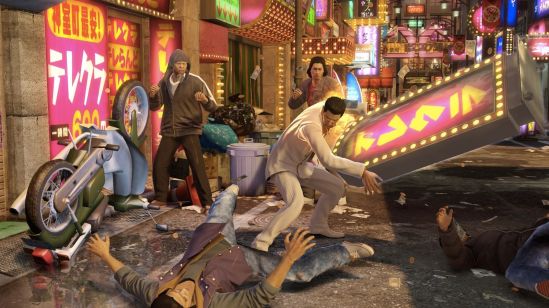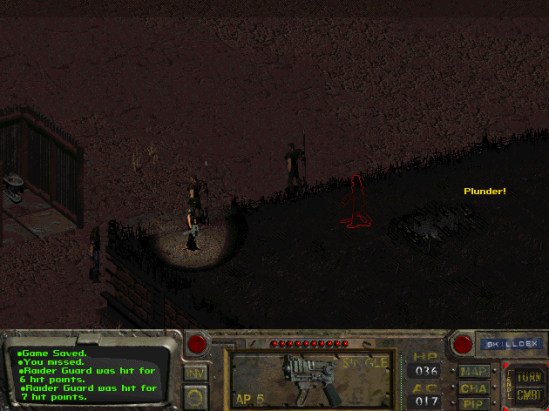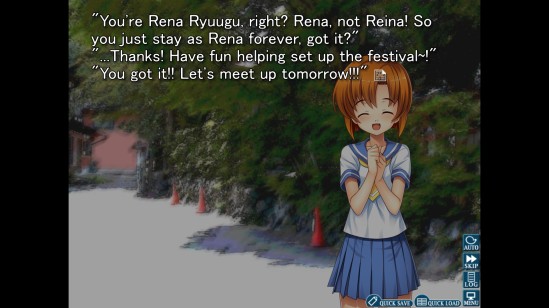You may be surprised to hear this, but I’ve been playing some games lately. I know, I know, I’ll give you a moment to collect yourself. Specifically, I’ve been playing entries in long running series that strongly call back to earlier, well-regarded games in the series. Suikoden V, which is absolutely steeped in Suikoden 2, and Yakuza 0, which is completely built on top Yakuza 1. In atmosphere, world, and design, both of those games call back on earlier territory. They’re also both very good! In building themselves off of series favorites, they’ve managed to make something exceptional themselves.
So many games try to mimic other games to ill effect. It’s depressingly common for a series to get stuck after an excellent entry as it always tries to recapture what made that game great without ever quite surpassing it. It’s also common for a game to try and ape the features of a successful game from other creators, without understanding what made it great. So why is it that these two games, which are so focused on building off of earlier games, managed to make things work while others in similar situations do not? I’m thinking that they have a lot of features in common. Now, there are other games that take to their big retro focus really well, without necessarily doing any of those things here, so this isn’t an exhaustive list of what makes fandom callback games good, but I think it is a nice highlight of what worked in at least these scenarios
They Built on Top of the Originals
A common problem with games that try too hard to mimic a former entry is that they either settle for being a copy, or if they do expand on the original, they do so in an unsteady manner. New features either don’t mesh with the original model, or they’re implemented in such a way that shows a developers lack of confidence in going beyond the formula.

Both these games successfully navigate all these problems, by confidently, and successfully, building on top of the established the formula. Suikoden V is perhaps the better example of this. The previous two games in the series had taken some ill-received liberties with the central mechanics of the Suikoden series, and Suikoden 5 proved to be a return to form for the franchise. Yet even as they dropped the familiar mechanics back in there, they still put plenty of new features onto them, changing the way the system worked. The traditional six person setup had formations added to it, adding a bit of new tactics. There were new options for acquiring and utilizing runes, changing up how that traditional rune hunting worked. Navigating the world map took on a whole separate realm of pathfinding as well, as the new system of rivers both broke up the landscape and provided additional routes through it. Suikoden V was a return to form, yes, but even if you just went straight from Suikodens II to V, they built enough on there to change the way the formula works. It’s new and fresh again.
Yakuza 0 operates similarly. The series has been using the same combat formula for however many games now. It’s a solid one. And they’ve already added a new character here, so there’s already new movesets built into it. They could have left it there. But rather, they took the risk on building a whole-new style-switching system into the new engine. The new combat system keeps the mechanics and the spirit of the old-style Yakuza combat but it twists it into something that feels brand new.
In so doing, they escape making an experience that’s inevitably worse than the original by trying to copy it exactly, while also delivering an experience that’s quality by developing the new features both smartly and in line with what made the classics great.
They Subvert Established Expectations
Part of the reason series sell so well is that we know what to expect. An IP builds up trust in the design philosophy, the mechanics, the storytelling, the team behind it. After we have a good experience with one entry in a series, we expect the next to carry through not just a similar level of quality, but in a similar style. That’s why we keep anticipating the next entry, that’s why we keep going back to a series we love. And especially in series that have such a consistent formula as Suikoden and Yakuza, we know what to expect out of it way more than usual, down to the details.
And the two games that spawned this post are well aware of that. And they use that. They don’t need to do the groundwork in establishing your expectations before they start subverting them, they just play off of what the earlier games set.
Yakuza 0 has the most prime example. Majima Goro has appeared every other game in the series, always showing up as the mad dog, blood knight, fighting rules everything type. He may be on your side at times, but you still need to beat your ideals into him in order to earn his help. He is always a wild man, living for his own cause and amusement.

So when he’s introduced in his first canon playable appearance, and he is demure, prim, and above-all non-violent, it is positively jarring. An explanation is forthcoming, but even after that he’s not yet the powerful figure he is later on in the timeline, and he allows others to hold his leash. This dissonance with the Majima we know adds a lot of depth to the character, one that’s carried through for as long as I’ve been playing thus far.
Suikoden V plays with a common story element that’s been showing up through the series. Every game in the Suikoden series has a big plot twist on betrayal. You’ll have a character who’s been working closely with you thus completely screw your plans by selling you out to the enemy, usually relatively early on. Suikoden V has a betrayal occur early on, but it doesn’t quite fit the element here, so it’s not a satisfactory call back. Then it gives you a character who fits everything to set that up, being both very close to you and having a background that could easily lead to that betrayal. She never does. Then a reliable character claims that another close character had been in the process of betraying you all along. Turns out that was a misunderstanding. The betrayal does come, but way later than usual, to the point that all these subversions had me thinking the game wasn’t actually going to do it, and as a result, hit way harder than I expected.
Honestly, this is probably my favorite element here, that these game use what came before to twist things into something unexpected. Led to some of the most powerful individual moments in those games.
They Make the Originals Bigger
It’s not easy to retroactively add to a story. It’s easy to retroactively make it worse, by spoiling conclusions or adding plot holes, but retroactively leading to a better understanding takes some conscious doing.

Suikoden V had an easy time of it, as the whole of the Suikoden series is written as if it’s a small part of a greater narrative none of us are privileged to be in on. So this isn’t unique to Suikoden V, the rest of the series after the first does this too, but V was the best at it. Nearly every returning element from another game had their story added to. The best example is Georg Prime, who was just a random mysterious badass with a questionable background in Suikoden II, but becomes one of the leading characters in Suikoden V and you get to see just what the circumstances were that led him there. It also takes the time to explain just what was up between those relic hunters, which was almost completely unexplained in Suikoden II. It goes beyond that, too, showing what happened with your homelands in Suikoden IV hundreds of years after the end of your journey. Playing this game actually rounds out those characters and setting retroactively, so you’ve got more of an understanding when you’re coming back to the originals.

The original Yakuza always suffered from the fact that its leading villain, Nishikiyama, was a little underdeveloped. He was supposedly a childhood friend of your leading character, to the point that the protagonist is willing to through his life away for him in the beginning of the story, but you never got a chance to really connect with him. The few times you see Nishikiyama before his start of darkness he’s too mired in his depression and his own business to really demonstrate much of the connection he supposedly has with your protagonist. Then, after the time skip, when it turns out that everything you’ve done for him has left him rotten, it doesn’t have that big ring of betrayal that it should, because his original relationship was never established. Yakuza 0 corrects that, starting before everything went down, and showing him as your most reliable ally through everything you go through, and showing the relationship as it should have been shown in Yakuza 0. Haven’t played through the original Yakuza since I started 0, but I’m pretty sure I’ll have a whole different view of events next time through.
They Stand on their Own

And, you know, this is a pretty big one. Yes, both these games call back to others pretty heavily. Yes, you’re going to have a different experience with these coming in new than if your an experienced player. But they still stand on their own. They’re good experiences either way. The mechanics are sound, the stories fall into a self-contained arc that doesn’t rely on another game for setup or completion, and anyone could pick it up and get a whole, complete, quality game. The retro features are just icing on the cake, and that makes the cake as a whole all the more worth it.














